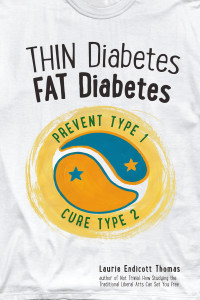Sickle Cell Disease and Diet
I recently met someone who shared that he has Sickle Cell Disease. I mentioned that I am a registered dietitian who focuses on plant-based nutrition. He remarked “Really? I haven’t met any dietitians who are plant-based.” He stated that although he has been a vegan for awhile, he didn’t go whole food plant based (WFPB) until he read The China Study. He asked “Perhaps you’ve heard of it?” I smiled and assured him that I had. I asked him if he has been helped by following a WFPB diet. He responded “Hell yeah” (I paraphrase here.)
What is Sickle Cell Disease?
(Info from the National Institutes of Health (NIH)
Sickle Cell Disease is a group of disorders that affects hemoglobin, the molecule in red blood cells that delivers oxygen to cells throughout the body. People with this disorder have atypical hemoglobin molecules called hemoglobin S, which can distort red blood cells into sickle, or crescent, shape.
Signs and symptoms of sickle cell disease usually begin in early childhood. Characteristic features of this disorder include a low number of red blood cells (anemia), repeated infections, and periodic episodes of pain. The severity of symptoms varies from person to person. Some people have mild symptoms, while others are frequently hospitalized for more serious complications.
The signs and symptoms of sickle cell disease are caused by the sickling of red blood cells. When red blood cells sickle, they break down prematurely, which can lead to anemia. Anemia can cause shortness of breath, fatigue, and delayed growth and development in children. The rapid breakdown of red blood cells may also cause yellowing of the eyes and skin, which are signs of jaundice. Painful episodes or crises can occur when sickled red blood cells, which are stiff and inflexible, get stuck in small blood vessels. These episodes deprive tissues and organs of oxygen-rich blood and can lead to organ damage, especially in the lungs, kidneys, spleen, and brain. A particularly serious complication of sickle cell disease is high blood pressure in the blood vessels that supply the lungs (pulmonary hypertension). Pulmonary hypertension occurs in about one-third of adults with sickle cell disease and can lead to heart failure.
What Causes Sickle Cell Disease?
Sickle Cell Disease is caused by a problem in the hemoglobin-beta gene found on chromosome 11. The defect forms abnormal hemoglobin molecules.
Both parents need to pass the abnormal hemoglobin gene on to a child in order for the disease to develop. If both parents carry the defective gene, a child has a 1 in 4 chance of inheriting the disease and becoming sick with it.
If a child is born with one defective hemoglobin-beta gene, he may become a carrier of the disease. Carriers usually don’t develop SCD symptoms. But, they can pass the disease on to future children if their partner also carries the sickle cell trait.
About 100,000 people in the United States have sickle cell disease. Most of them are African-Americans.
Nutritional Considerations from The PCRM
Patients with sickle cell disease have increased needs for calories and micronutrients (e.g., vitamins and minerals). A diet emphasizing fruits, vegetables, whole grains, and legumes will provide a greater proportion of essential nutrients than a typical Western diet, and appropriate supplementation (one to three times the recommended intakes for most essential nutrients) can prevent deficiency.
- A high–calorie, nutrient–dense diet: The average caloric intake of sickle cell patients is typically low, especially during flare–ups of the disease. As a result, children with sickle cell disease have impaired growth and significantly lower weight compared with unaffected individuals. A careful nutritional assessment and the addition of energy supplements are needed.
- Adequate fluid consumption to maintain hydration: Sickling of red blood cells increases when patients become dehydrated. Thus, it is important to maintain hydration by consuming adequate fluids. In some cases, hospitalization to receive intravenous fluids may become necessary.
- Vitamin and mineral supplementation: Blood levels of several vitamins and minerals are often low in individuals with sickle cell disease, including vitamin A and carotenoids, vitamin B6, vitamin C, vitamin E, magnesium, and zinc. This can result in a significant deficiency of antioxidants, which may increase the risk of disease flare–ups. Studies indicate that vitamin–mineral supplements of certain nutrients (vitamins C and E, zinc, and magnesium) or treatment with a combination of high–dose antioxidants can reduce the percentage of sickled red blood cells.
- Omega–3 fatty acid supplements: Supplementation with omega–3 fatty acids can improve the membranes of red blood cells and may decrease flare–ups of the disease. A small preliminary study indicated that omega–3 fatty acid supplementation with fish oil reduced the number of painful episodes requiring hospitalization. However, this finding has not yet been confirmed in controlled trials.
Promising Research with L – Glutamine
Glutamine is the most abundant amino acid (building block of protein) in the body. The body can make enough glutamine for its regular needs. But during times of extreme stress (the kind you experience after heavy exercise or an injury), your body may need more glutamine than it can make. Most glutamine is stored in muscles, followed by the lungs where much of the glutamine is made.
Eamus Life Sciences Inc. has an oral pharmaceutical grade L – glutamine treatment that demonstrated positive clinical results in their Phase 3 clinical trial for sickle cell anemia and sickle ß0-thalassemia. The US Food and Drug Administration (FDA) has established a PDUFA date of July 7. 2017. This is the deadline date by which the FDA must review Eamus’s application for L – Glutamine’s use for Sickle Cell Disease. Although this is not a cure for Sickle Cell Disease, any treatment that could reduce the frequency and intensity of Sickle Cell crises would be a welcome development.
Is A Gene Therapy Cure Possible?
In an earlier article, I wrote about how genetic research receives a large amount of funding – especially when compared to nutrition research. This seems wrongheaded when pertaining to the pursuance of a cure for heart disease, type II diabetes and other lifestyle-related diseases.
However, genetic research funding makes a whole lot of sense for genetic diseases like Sickle Cell Disease. Geneticists are known for saying that a cure is “just around the corner” for (insert disease here) year after year and decade after decade. But in the case of Sickle Cell Disease, the corner may be near.
Exciting things are happening as evidenced by this article that discusses altering the genetic code of the patient’s own bone marrow to allow for the production of healthy red blood cells. It appears to have cured a teenager in Paris.
There is a long way to go before this method can be called a cure, but I imagine this latest development is music to the ears of all Sickle Cell Disease patients and their friends and family.






 E Excerpt from Laurie Endicott Thomas’s amazing book Thin Diabetes – Fat Diabetes by clicking here!
E Excerpt from Laurie Endicott Thomas’s amazing book Thin Diabetes – Fat Diabetes by clicking here!
God Bless you for addressing vitamins for sickle cell patients.
If you have any information on the impact minerals have on these patients, I would be grateful to know.
This is a questions we can’t get answered by physicians.
Thank you
My daughter has sickle cell disease. Oddly she was diagnosed at age 6. It is a horrible illness! She is now 37 years old and unable to maintain a steady job because of the sporadic crises. She is a warrior dealing with the pain and depression as much as she can. She also has a 15 year old daughter who has the trait. She is a single parent. I am constantly worried about her and sometimes I too, face depression. I am PRAYING FOR A CURE!!! THANK YOU for this article. She receives care from John’s Hopkins Hospital.Please pray for our sickle warriors,Please.